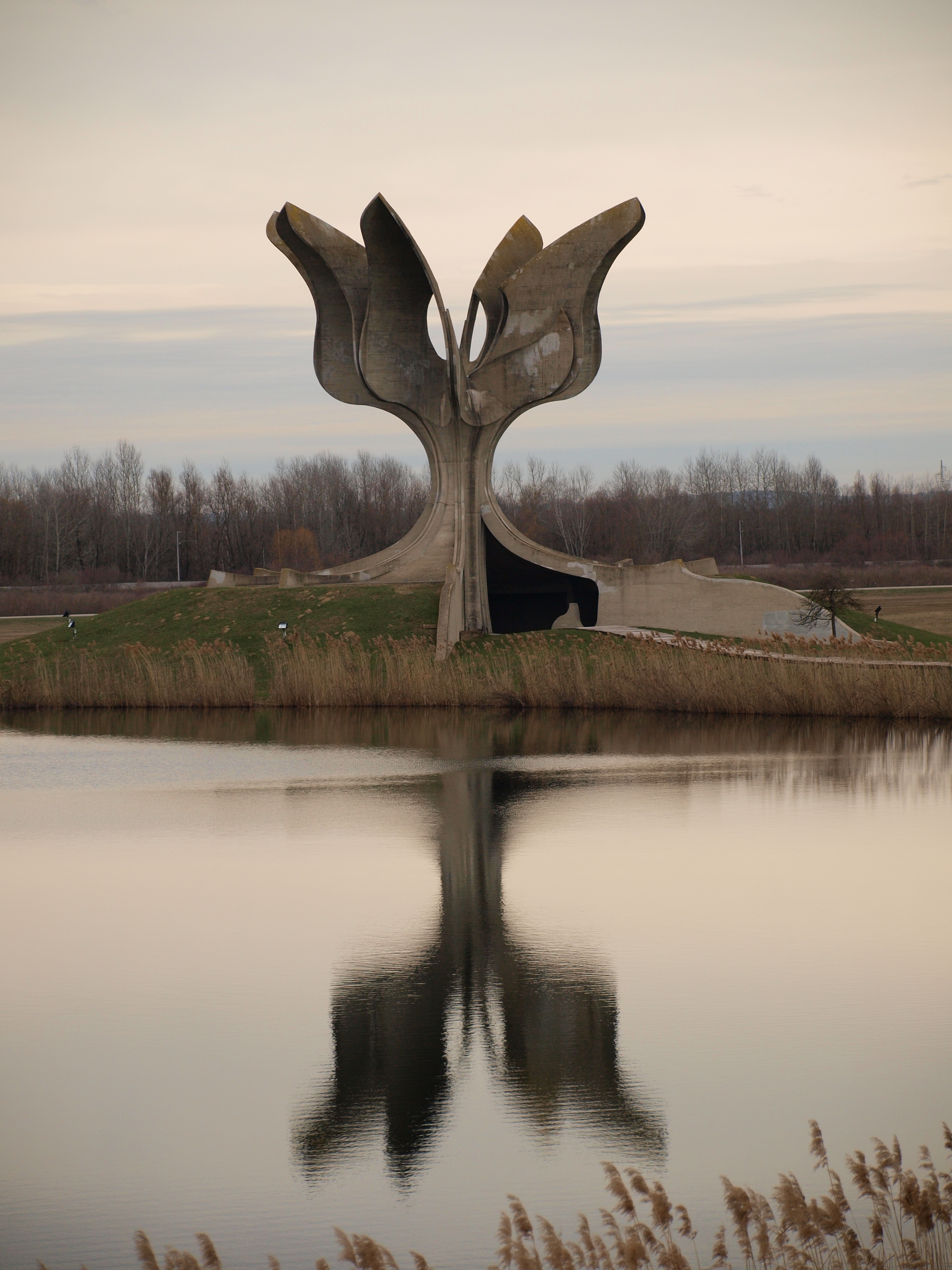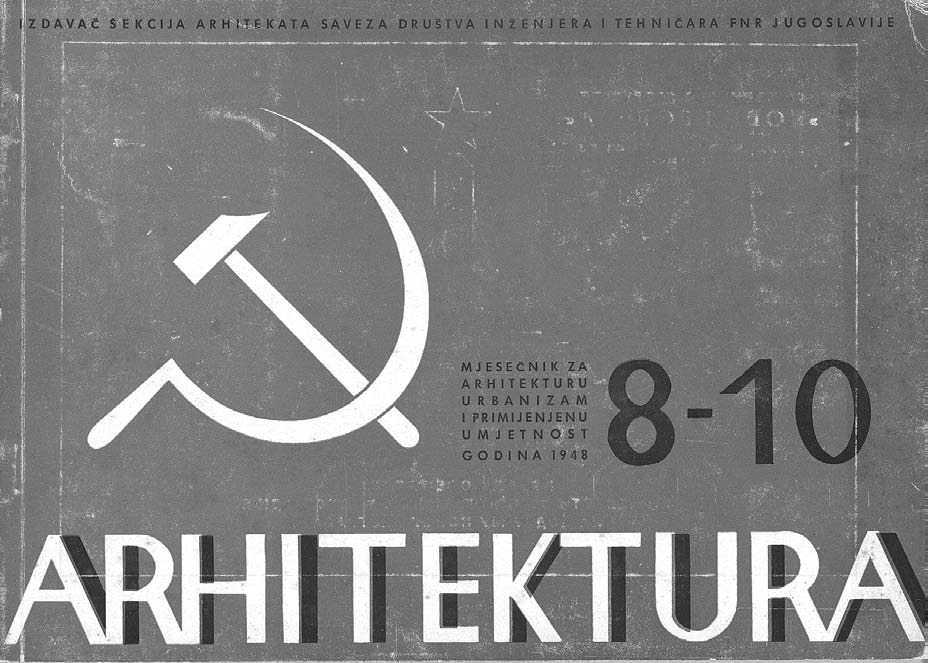Architecture of Yugoslavia on:
[Wikipedia]
[Google]
[Amazon]
 The architecture of Yugoslavia was characterized by emerging, unique, and often differing national and regional narratives. As a socialist state remaining free from the
The architecture of Yugoslavia was characterized by emerging, unique, and often differing national and regional narratives. As a socialist state remaining free from the
 Immediately following the
Immediately following the
 Yugoslav architecture, particularly that of monuments, has attracted increased public attention in recent years. In the late 1990s and early 2000s, Belgian photographer Jan Kempenaers released a series of photographs documenting dilapidated World War II monuments and memorials in Yugoslavia. In July 2018
Yugoslav architecture, particularly that of monuments, has attracted increased public attention in recent years. In the late 1990s and early 2000s, Belgian photographer Jan Kempenaers released a series of photographs documenting dilapidated World War II monuments and memorials in Yugoslavia. In July 2018
Spomenik Database
{{Yugoslavia topics Culture of Yugoslavia Architecture related to utopias
Iron Curtain
The Iron Curtain was the political and physical boundary dividing Europe into two separate areas from the end of World War II in 1945 until the end of the Cold War in 1991. On the east side of the Iron Curtain were countries connected to the So ...
, Yugoslavia
, common_name = Yugoslavia
, life_span = 1918–19921941–1945: World War II in Yugoslavia#Axis invasion and dismemberment of Yugoslavia, Axis occupation
, p1 = Kingdom of SerbiaSerbia
, flag_p ...
adopted a hybrid identity that combined the architectural, cultural, and political leanings of both Western liberal democracy
Liberal democracy, also called Western-style democracy, or substantive democracy, is a form of government that combines the organization of a democracy with ideas of liberalism, liberal political philosophy. Common elements within a liberal dem ...
and Soviet communism.
Interwar modernism
Yugoslav architecture emerged in the first decades of the 20th century before the establishment of the state; during this period a number of South Slavic creatives, enthused by the possibility of statehood, organized a series of art exhibitions inSerbia
, image_flag = Flag of Serbia.svg
, national_motto =
, image_coat = Coat of arms of Serbia.svg
, national_anthem = ()
, image_map =
, map_caption = Location of Serbia (gree ...
in the name of a shared Slavic identity. Following governmental centralization after the 1918 creation of the Kingdom of Yugoslavia
The Kingdom of Yugoslavia was a country in Southeast Europe, Southeast and Central Europe that existed from 1918 until 1941. From 1918 to 1929, it was officially called the Kingdom of Serbs, Croats, and Slovenes, but the term "Yugoslavia" () h ...
, this initial bottom-up enthusiasm began to fade. Yugoslav architecture became more and more dictated by an increasingly concentrated national authority which sought to establish a unified state identity.
Beginning the 1920s, Yugoslav architects began to advocate for architectural modernism, viewing the style as the logical extension of progressive national narratives. The Group of Architects of the Modern Movement, an organization founded in 1928 by architects Branislav Đ Kojić, Milan Zloković, Jan Dubovy, and Dusan Babic pushed for the widespread adoption of modern architecture as the "national" style of Yugoslavia to transcended regional differences. Despite these shifts, differing relationships to the west made the adoption of modernism inconsistent in Yugoslavia WWII; while the westernmost republics of Croatia
Croatia, officially the Republic of Croatia, is a country in Central Europe, Central and Southeast Europe, on the coast of the Adriatic Sea. It borders Slovenia to the northwest, Hungary to the northeast, Serbia to the east, Bosnia and Herze ...
and Slovenia
Slovenia, officially the Republic of Slovenia, is a country in Central Europe. It borders Italy to the west, Austria to the north, Hungary to the northeast, Croatia to the south and southeast, and a short (46.6 km) coastline within the Adriati ...
were familiar with Western influence and eager to adopt modernism, long-Ottoman Bosnia
Bosnia and Herzegovina, sometimes known as Bosnia-Herzegovina and informally as Bosnia, is a country in Southeast Europe. Situated on the Balkans, Balkan Peninsula, it borders Serbia to the east, Montenegro to the southeast, and Croatia to th ...
remained more resistant to do so. Of all Yugoslavian cities, Belgrade
Belgrade is the Capital city, capital and List of cities in Serbia, largest city of Serbia. It is located at the confluence of the Sava and Danube rivers and at the crossroads of the Pannonian Basin, Pannonian Plain and the Balkan Peninsula. T ...
has highest concentration of modernist structures.
Socialist realism (1945–48)
 Immediately following the
Immediately following the Second World War
World War II or the Second World War (1 September 1939 – 2 September 1945) was a World war, global conflict between two coalitions: the Allies of World War II, Allies and the Axis powers. World War II by country, Nearly all of the wo ...
, Yugoslavia's brief association with the Eastern Bloc
The Eastern Bloc, also known as the Communist Bloc (Combloc), the Socialist Bloc, the Workers Bloc, and the Soviet Bloc, was an unofficial coalition of communist states of Central and Eastern Europe, Asia, Africa, and Latin America that were a ...
ushered in a short period of socialist realism. Centralization within the communist model led to the abolishment of private architectural practices and the state control of the profession. During this period, the governing Communist Party condemned modernism as "bourgeois formalism," a move that caused friction among the nation's pre-war modernist architectural elite.
Modernism (1948–92)
Socialist realist architecture in Yugoslavia came to an abrupt end withJosip Broz Tito
Josip Broz ( sh-Cyrl, Јосип Броз, ; 7 May 1892 – 4 May 1980), commonly known as Tito ( ; , ), was a Yugoslavia, Yugoslav communist revolutionary and politician who served in various positions of national leadership from 1943 unti ...
's 1948 split with Stalin. In the following years the nation turned increasingly to the West, returning to the modernism that had characterized pre-war Yugoslav architecture. During this era, modernist architecture came to symbolize the nation's break from the USSR (a notion that later diminished with growing acceptability of modernism in the Eastern Bloc). The nation's postwar return to modernism is perhaps best exemplified in Vjenceslav Richter
Vjenceslav Richter (; 8 April 1917 – 2 December 2002) was a Croatian architect. He was also known for his work in the fields of urbanism, sculpture, graphic arts, painting, and stage design.
Career
In 1949, Richter graduated at the Department ...
's widely acclaimed 1958 Yugoslavia Pavilion at Expo 58
Expo 58, also known as the 1958 Brussels World's Fair (; ), was a world's fair held on the Heysel/Heizel Plateau in Brussels, Belgium, from 17 April to 19 October 1958. It was the first major world's fair registered under the Bureau Internati ...
, the open and light nature of which contrasted the much heavier architecture of the Soviet Union.
Spomeniks
During this period, the Yugoslav break from Soviet socialist realism combined with efforts to commemorate World War II, which together led to the creation of an immense quantity of abstract sculptural war memorials, known today as s''pomenik''.Brutalism
In the late 1950s and early 1960sBrutalism
Brutalist architecture is an architectural style that emerged during the 1950s in the United Kingdom, among the reconstruction projects of the post-war era. Brutalist buildings are characterised by minimalist constructions that showcase the b ...
began to garner a following within Yugoslavia, particularly among younger architects, a trend possibly influenced by the 1959 disbandment of the Congrès Internationaux d'Architecture Moderne
The ''Congrès Internationaux d'Architecture Moderne'' (CIAM), or International Congresses of Modern Architecture, was an organization founded in 1928 and disbanded in 1959, responsible for a series of events and congresses arranged across Europ ...
. Brutalism's growing influence in the nation was most prominently exemplified in reconstruction efforts of Skopje
Skopje ( , ; ; , sq-definite, Shkupi) is the capital and largest city of North Macedonia. It lies in the northern part of the country, in the Skopje Basin, Skopje Valley along the Vardar River, and is the political, economic, and cultura ...
following a destructive 1963 earthquake. Japanese architect Kenzo Tange played a key role in pushing for Brutalism in the city, going so far as to propose a full redesign of Skopje in the style.
The architecture of the city is compiled in Kenzo Tange's Masterplan of Skopje City 1963 with a collaboration led by the UNs teams of international architects.
Decentralization
With 1950s decentralization and liberalization policies inSFR Yugoslavia
The Socialist Federal Republic of Yugoslavia (commonly abbreviated as SFRY or SFR Yugoslavia), known from 1945 to 1963 as the Federal People's Republic of Yugoslavia, commonly referred to as Socialist Yugoslavia or simply Yugoslavia, was a country ...
, architecture became increasingly fractured along ethnic lines. Architects increasingly focused on building with reference to the architectural heritage of their individual socialist republics in the form of critical regionalism
Critical regionalism is an approach to architecture that strives to counter the placelessness and lack of identity of the International Style, but also rejects the whimsical individualism and ornamentation of Postmodern architecture. The stylings ...
. A notable example of this shift is the Juraj Neidhardt and Dušan Grabrijan's seminal 1957 publication ''Architecture of Bosnia and the way into modernity'' () which sought to understand modernism through the lens of Bosnia's Ottoman heritage.
Growing distinction of individual ethnic architectural identities within Yugoslavia was exacerbated with the 1972 decentralization of the formerly centralized historical preservation authority, providing individual regions further opportunity to critically analyze their own cultural narratives.
In popular culture
 Yugoslav architecture, particularly that of monuments, has attracted increased public attention in recent years. In the late 1990s and early 2000s, Belgian photographer Jan Kempenaers released a series of photographs documenting dilapidated World War II monuments and memorials in Yugoslavia. In July 2018
Yugoslav architecture, particularly that of monuments, has attracted increased public attention in recent years. In the late 1990s and early 2000s, Belgian photographer Jan Kempenaers released a series of photographs documenting dilapidated World War II monuments and memorials in Yugoslavia. In July 2018 MoMA
The Museum of Modern Art (MoMA) is an art museum located in Midtown Manhattan, New York City, on 53rd Street (Manhattan), 53rd Street between Fifth Avenue, Fifth and Sixth Avenues. MoMA's collection spans the late 19th century to the present, a ...
opened a 6 month exhibition entitled "Toward a Concrete Utopia" that provided visitors with a large collection of images, architectural models, and drawings from Yugoslav architecture from 1948 to 1980. Meanwhile, American researcher and author Donald Niebyl has been working since 2016 to create an online educational resource to explore and catalog the history of Yugoslav monuments and architecture, titled "Spomenik Database".
Gallery
See also
* Architecture of Serbia *Architecture of Kosovo
The architecture of Kosovo dates back to the Neolithic, Neolithic period and includes the Chalcolithic, Copper, Bronze Age, Bronze and Iron Ages, Classical antiquity, Antiquity and the Middle Ages, Medieval period. It has been influenced by the pr ...
* Architecture of Croatia
* Architecture of Bosnia and Herzegovina
* Architecture of Montenegro
* Architecture of North Macedonia
* Architecture of Slovenia
* Utopian architecture
Utopian architecture is architecture inspired by utopianism. Examples for such an architecture are Phalanstère, Arcology and Garden Cities. Earthships are realizations of the utopia of sustainable living and autonomous housing. Also, the concep ...
References
External links
Spomenik Database
{{Yugoslavia topics Culture of Yugoslavia Architecture related to utopias